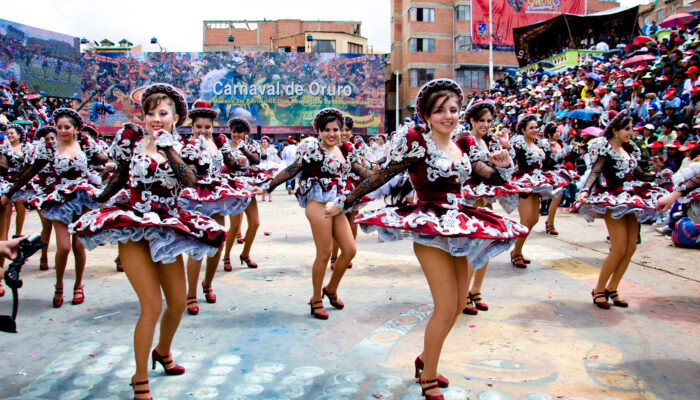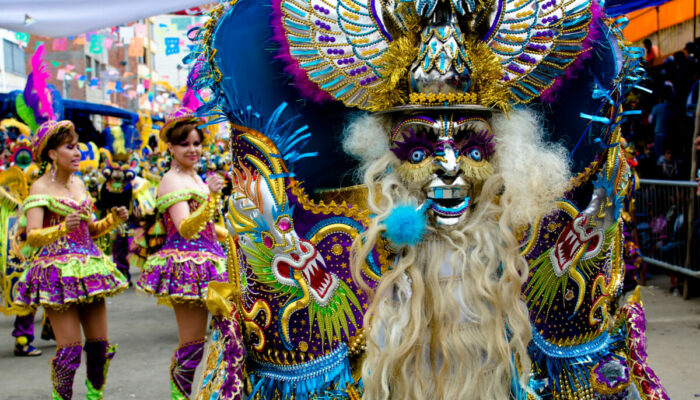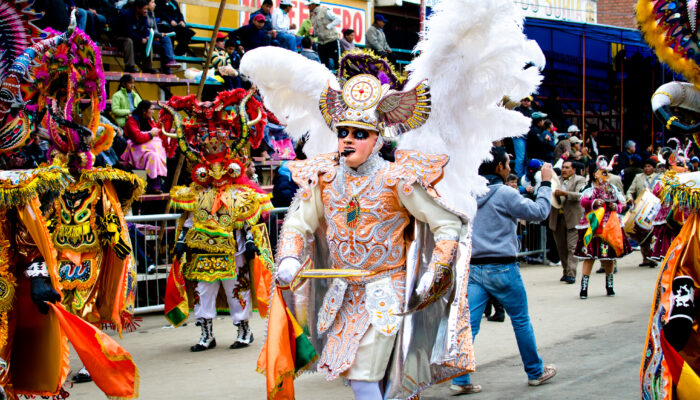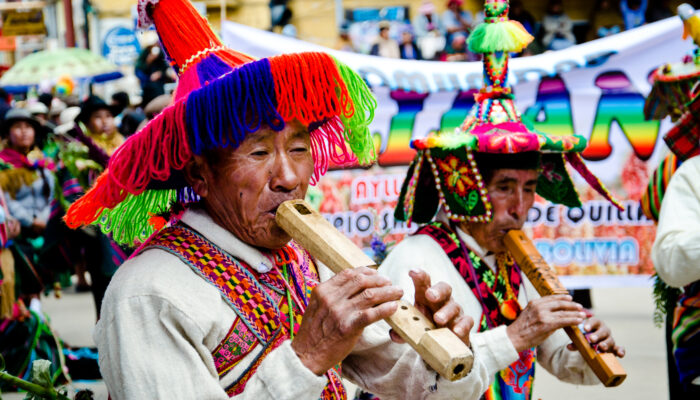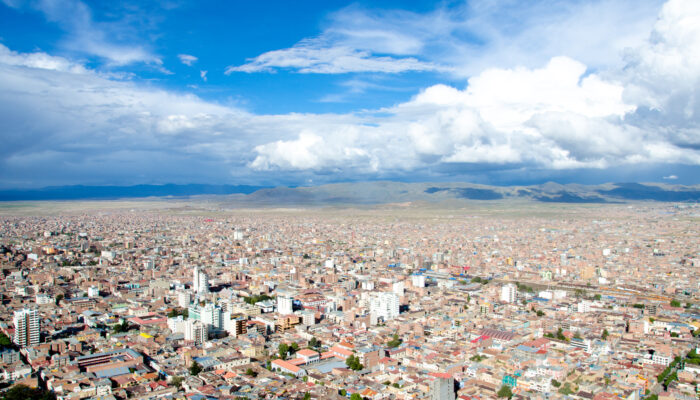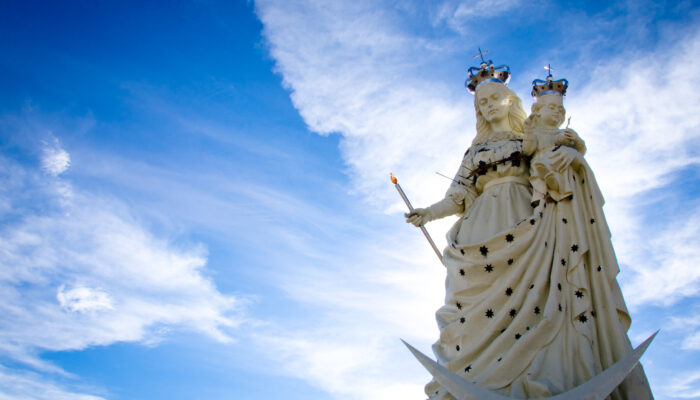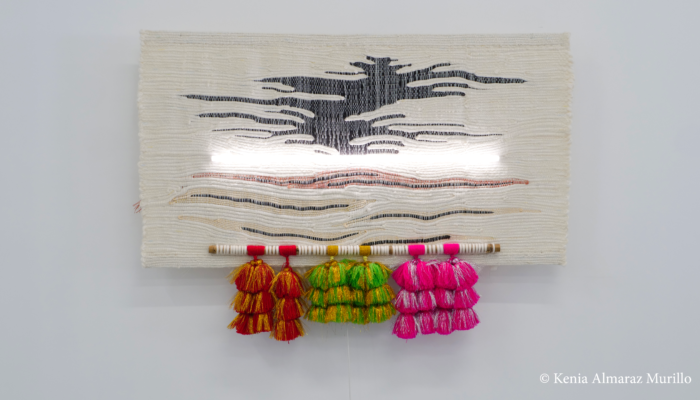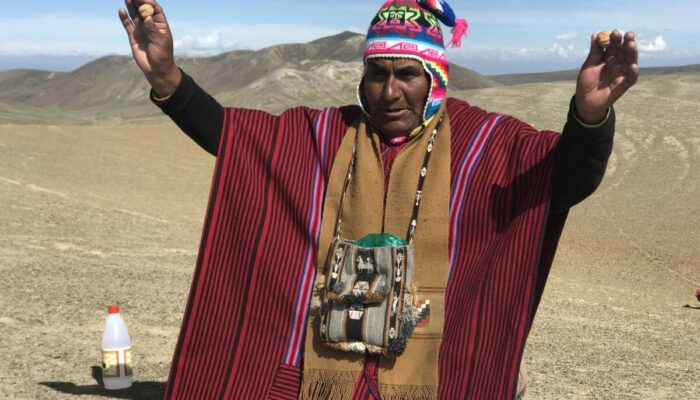This year, turn away from the famous carnivals of Venice and Rio de Janeiro for the authentic and renowned Oruro carnival, one of the biggest in Latin America and the most important in the country: recognised as a UNESCO World Heritage Site since 2008.
Established in devotion to the Virgen del Socavón, discover the history not only of this celebration but also of its city, located in the southern Altiplano: Oruro is famous for its mines and its devil worship. We invite you to experience the excitement of this festival, which will take place during the summer in Bolivia, from 11 to 21 February 2023.
Between dancers, musicians and spectators, Thaki Voyage promises you an event full of colour, glitter and emotion. Get ready to dance: a “joie de vivre” excursion awaits you with open arms!
A feast of costumes and eye-catching festivities
In an electric atmosphere, enjoy a show performed by more than 30,000 dancers and 10,000 musicians, all dressed in impressive costumes.
Divided into some fifty groups, the dancers perform a variety of choreographies, including caporales, llameradas, morenadas, tinkus and tobas, not forgetting the traditional and bewitching diablada.
There’s an incredible energy, a delirious ardour fuelled by the indefatigable dancers’ fury for life. The costumes also help to brighten up this explosive atmosphere.
The dancers’ dresses are a firework display of colour, and some of them wear pompoms at the end of their braids, which they twirl to the rhythm of the music.
And even if the clothes vary according to the type of dance, the embroideries, textiles and masks that line the city’s alleyways on these days bear witness to the great skill of Bolivian craftsmanship.
The dancers and torch-lit processions bring to life a mysterious procession with medieval overtones. In fact, this celebration is part of the Ito festival, which pays homage to the Uru people, and during their many passages, the dancers re-enact the battle between Good and Evil.
It’s a complex mix of myths, fables and divinities, beginning with a ceremony dedicated to the Virgen del Socavón.
The main event is the grand procession, in which the dancers cover four kilometres without stopping for twenty hours!
The folk festival ends with two plays, not forgetting a huge water fight.
And if you’re feeling brave, don’t hesitate to try the traditional remedy for the after-effects of the festival: bull penis soup.
A parade of history, a blend of influences from Andean traditions and the Catholic religion
You’ll be speechless in front of Oruro’s impressive carnival, but it’s worth understanding its origins if you want to experience it to the full!
Its shows conceal a symbolic dimension and are part of a very ancient history. In fact, the carnival tradition dates back over two millennia and continues to this day.
Between Aymara rites and Christian beliefs, Bolivia is marked by its colonial and indigenous history, which is reflected in the many processions and rituals of Carnival. This festival is therefore a perfect example of how Andean and Catholic traditions meet.
Carnival follows a very precise sequence that leaves nothing to chance and delivers a message, in which most Bolivian dances express their rejection of the domination of the Spanish crown during the conquest of indigenous lands. Indeed, some groups convey this sentiment through their choreography. This colonial period is perfectly illustrated in a dance paying homage to the Sun and the Moon.
During these parades, the union between man and Pachamama is expressed, as is the modern reality experienced by Bolivians.
The original indigenous ceremonies in honour of Itu and invocations of the Pachamama have now been transformed into a celebration of the Virgin Mary, in conjunction with Catholic rituals.
And the city of Oruro?
Oruro may seem uninteresting outside the carnival season, but it’s quite the opposite!
Make the most of your visit to discover this mountainous city, a former mining town situated at an altitude of 3,700 metres in the west of Bolivia. Rich in a cultural heritage of dance and music, it is the folklore capital of the country.
The largest town in its region, this mining centre was refounded by the Spaniards in the 19th and 20th centuries, and despite the latter’s ban on Andean ceremonies, the indigenous festivities continued, albeit with a few changes.
The Itu festival was transformed into a Christian ritual, celebrated at Candlemas, and the diablada dance, dedicated to the god Tiw, became the characteristic dance of Oruro carnival.
Mathilde Leroux

